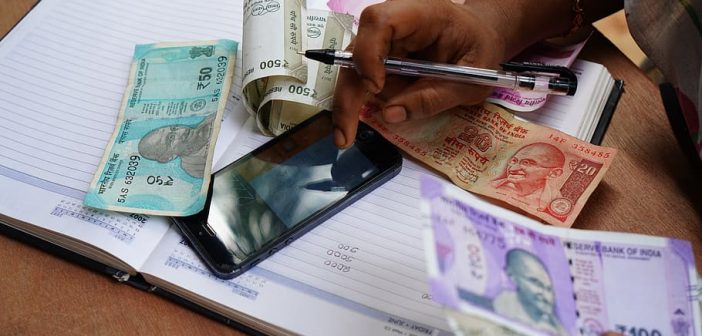The Indian Rupee, a symbol of the nation’s economic vitality, has witnessed a steady erosion in its purchasing power since 2020, grappling with a confluence of domestic and global factors that have reshaped India’s economic landscape. As the rupee’s value against major currencies continues to diminish, the implications for consumers, businesses, and policymakers reverberate across the nation, underscoring the imperative for a nuanced understanding of the underlying dynamics driving this depreciation.
The Impact of the Pandemic: Unraveling Economic Fragility
The onset of the COVID-19 pandemic in 2020 triggered unprecedented disruptions to global trade, investment, and consumption patterns, casting a shadow of uncertainty over the Indian economy. As lockdown measures stifled economic activity and disrupted supply chains, the rupee bore the brunt of heightened volatility in currency markets, experiencing sharp depreciations against the US dollar and other major currencies.
According to data from the Reserve Bank of India (RBI), the Indian Rupee depreciated by approximately 3.5% against the US dollar in 2020, marking its steepest annual decline in four years. The pandemic-induced economic downturn, coupled with capital outflows and subdued investor sentiment, exerted downward pressure on the rupee, exacerbating inflationary pressures and eroding consumer purchasing power.
Inflationary Pressures and External Dependencies
The depreciation of the Indian Rupee has far-reaching implications for domestic inflation dynamics, as imported goods and commodities become costlier in rupee terms. India, heavily reliant on imports for essential commodities such as crude oil, gold, and electronics, confronts the dual challenge of currency depreciation and rising inflationary pressures, straining household budgets and dampening consumer sentiment.
The cascading effects of currency depreciation extend beyond consumer markets, permeating into the realm of international trade and foreign investment. A weaker rupee renders Indian exports more competitive in global markets, offering a potential boost to export-driven industries such as textiles, IT services, and pharmaceuticals. However, heightened import costs and currency volatility undermine India’s trade balance and external competitiveness, posing challenges to sustainable economic growth and development.
Structural Impediments and Policy Imperatives
Beyond the immediate ramifications of currency depreciation, India grapples with entrenched structural impediments that hinder its ability to mitigate exchange rate fluctuations and bolster the resilience of the rupee. Structural factors such as fiscal deficits, current account imbalances, and geopolitical uncertainties contribute to currency volatility, undermining investor confidence and exacerbating market instability.
In response to mounting external pressures and domestic imperatives, the Reserve Bank of India (RBI) plays a pivotal role in managing exchange rate dynamics and preserving financial stability. Through a combination of monetary policy tools, foreign exchange interventions, and regulatory measures, the RBI endeavors to maintain orderly conditions in currency markets while safeguarding the rupee’s purchasing power and external value.
Navigating Uncertainty: Strategies for Mitigating Currency Risk
Amidst prevailing uncertainty and currency volatility, businesses and investors must adopt prudent strategies to mitigate currency risk and preserve capital in an evolving economic landscape. Hedging mechanisms such as forward contracts, options, and currency swaps offer avenues for managing exchange rate exposure and minimizing adverse impacts on financial performance.
Additionally, diversification of revenue streams, investment portfolios, and procurement channels can help mitigate the adverse effects of currency depreciation, enhancing resilience and adaptability in the face of market fluctuations. Moreover, enhanced transparency, regulatory clarity, and policy coordination are essential for fostering investor confidence and promoting sustainable economic growth in India’s dynamic marketplace.
Charting a Course for Economic Resilience
The depreciation of the Indian Rupee underscores the imperative for proactive policy measures, structural reforms, and strategic interventions aimed at bolstering the resilience of India’s economy and financial system. By addressing underlying vulnerabilities, enhancing productivity, and fostering a conducive environment for investment and innovation, India can navigate currency volatility and chart a course towards sustainable economic resilience and prosperity.
In confronting the challenges posed by currency depreciation, India has an opportunity to leverage its demographic dividend, technological prowess, and entrepreneurial spirit to catalyze inclusive growth and development. Through concerted efforts by policymakers, businesses, and civil society stakeholders, India can harness the transformative potential of currency stability and secure a brighter future for generations to come.






